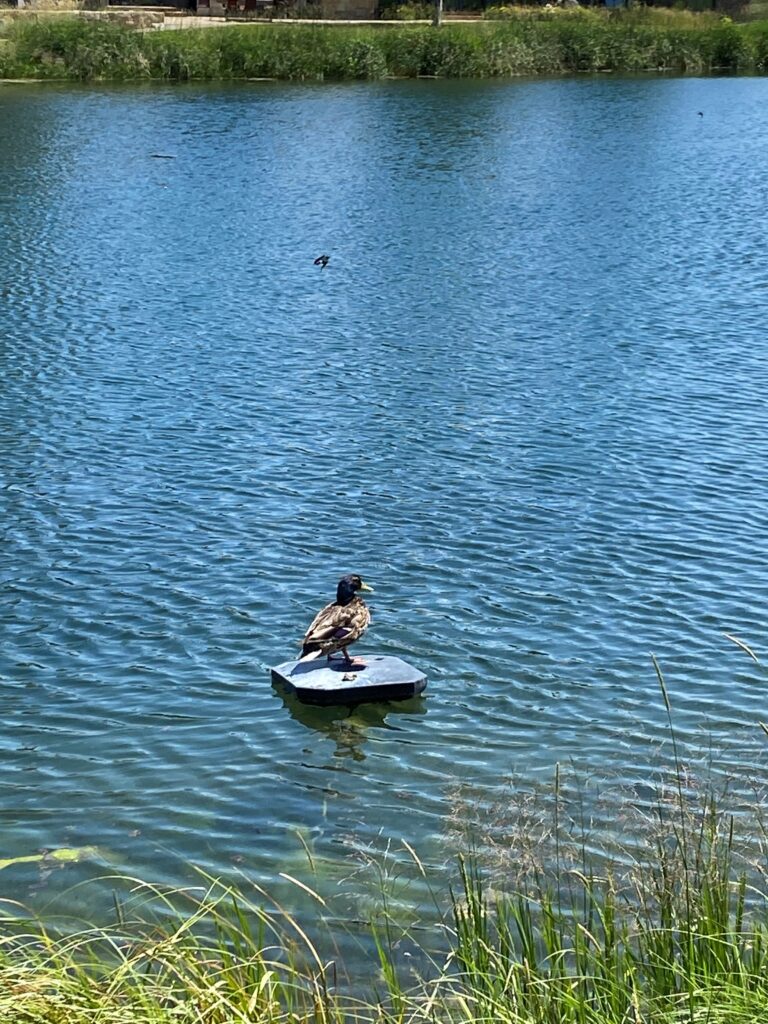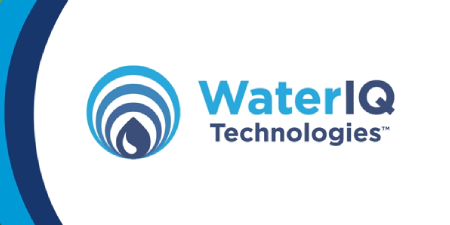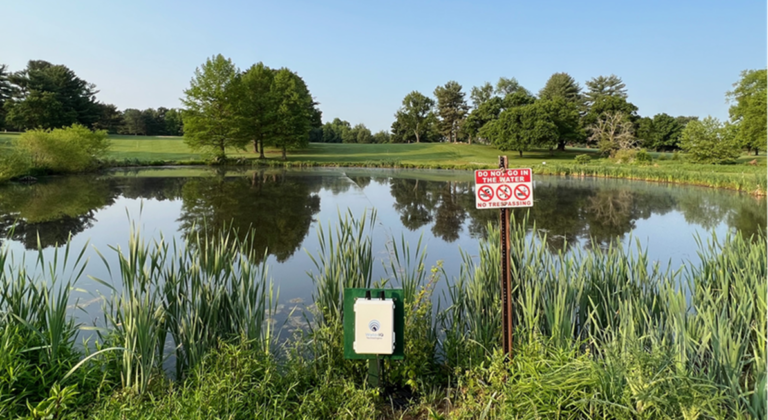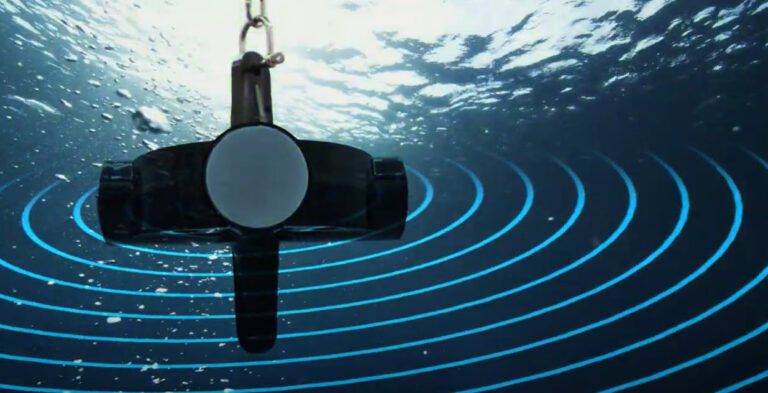Algal blooms caused by excess nutrient runoff are a growing problem for water managers. WaterIQ Technologies offers an ecosystem-friendly approach to controlling algal blooms without using harmful chemicals. Its ultrasound technology targets blue-green and green algae in lakes and lagoons, and in treatment plant clarifiers, it targets biofilm, which feeds algae. In this interview, Municipal Water Leader talks with CEO and Founder Lawrence Field about WaterIQ’s simple and sustainable solution to this vexing issue.
Published in Municipal Water Leader. Click here for article.
Municipal Water Leader: Please tell us about your background and how you came to be in your current position.
Lawrence Field: I am the CEO and founder of WaterIQ Technologies. My background is in the pipeline inspection business. I was the chairman of one of the largest pipeline inspection businesses in the United States. I also had a wastewater treatment business. I sold both companies and was semiretired in Jackson Hole, Wyoming, when I stumbled across an intriguing algal treatment technology on a golf course. I talked to the superintendent, who told me that he could not use chemicals to treat his algae issues because he was near a national park and because the course released water back into the Snake River. Since then, we have invested millions of dollars in upgrading the technology and integrating it with real-time water quality monitoring for utilities. I formed WaterIQ Technologies, and now we sell products to municipalities, wastewater treatment plants, and drinking water utilities as well as to industrial plants. We also have a lake and pond division that sells products for golf courses, lakes, ponds, homeowners associations, and the agricultural market.
Municipal Water Leader: Please give us a brief introduction to WaterIQ Technologies.
Lawrence Field: We are a 2‑year-old company. Instead of treating algae with chemicals—which can affect
other zooplankton, phytoplankton, fish, birds, and even humans—we offer a sustainable solution. We have 31 employees, and we are growing rapidly. We have a product development and manufacturing facility in Johnson City, Tennessee. We have assembled a scientific advisory board made up of leading experts in the study of harmful algae who are located around the world. They advise us on the effects of algal blooms and on the research that we are doing to ensure that our technology doesn’t affect wildlife and other parts of the water body.
Municipal Water Leader: What problems do algal blooms pose for municipalities?
Lawrence Field: Drinking water utilities and wastewater treatment plants are facing an epidemic of algal blooms. The reason for that is the increase in nutrient pollution, which is caused by phosphorus and nitrogen. When you have excess nitrogen and phosphorus being poured onto irrigated agricultural fields, it runs off into source reservoirs. Then, all of a sudden, a utility or treatment plant has an algal issue. Sometimes the problem is in the form of too many total suspended solids or some other potential regulatory violation. Drinking, accidentally swallowing, or swimming in water affected by a harmful
algal bloom can cause serious health problems, including rashes, stomach or liver illness, respiratory problems, or neurological issues.
The United States is trying to reduce nutrient pollution. Many states have initiatives to reduce things like the overuse of fertilizers or leaky septic tanks. The Infrastructure Investment and Jobs Act, also known as the Bipartisan Infrastructure Law, is funding initiatives in places like the Mississippi River and the Chesapeake Bay to decrease the use of nutrients. But algal blooms are still a growing problem—one that we are going to be dealing with for the next 50 years.
Municipal Water Leader: How does ultrasonic algae mitigation work?
Lawrence Field: If an opera singer hits the right frequency, they can shatter a glass. This technology works along similar lines. Inside blue-green algae, there is something called a gas vesicle that enables the algae to go up and down; engage in photosynthesis; and grow, especially when the water warms. Our device emits a resonant frequency that targets that gas vesicle. The gas vesicle starts to shake and then completely collapses. The blue-green algae then sink to the bottom of the lake and die, and beneficial bacteria in the water decompose them over a period of days. In green algae, there is a similar mechanism for photosynthesis called a thylakoid. Our technology targets only blue-green and green algae. We
are working on red algae, which is an issue in some coastal environments, but we are not there yet.
Municipal Water Leader: Tell us about the device that you use to carry this out.
Lawrence Field: Our Pulsar 4000 device sits in the middle of a water feature and emits ultrasonic frequencies in every direction, 360 degrees. It has a float and is anchored to the bottom of the water body. The device is powered by a cable hooked into the narrowest available power source, whether
that is 110 or 220 volts. If no power source is available, we set up solar units. Those units could also include remote water quality monitoring capabilities. All our technology is tied to a device that reports data to the cloud so that our customers can see in real time how their body of water is being treated.
When the device is used in treatment plants, the pulsing action of the ultrasonic waves eliminates biofilm, which grows on the sides of clarifiers and is the nutrient source for algae.

A duck rests undisturbed on a WaterIQ Pulsar device.
Municipal Water Leader: How often does a customer have to run the device?
Lawrence Field: The device can run 24 hours a day, 365 days a year. The only maintenance needed is to pull it out of the water every couple of months and clean off the transmission plates.
Municipal Water Leader: What kind of environments is the device best deployed in?
Lawrence Field: Our device works in any body of water or in the clarifier of a wastewater treatment plant or drinking water utility. One limitation is that the water needs to be at least 2–3 feet deep—deep enough so that when the algae die and go to the bottom, the sun cannot continue to hit them as they decompose. Another limitation is radius. We have a kill area of about 17 acres. If a reservoir or
wastewater lagoon is larger than that, we install multiple units. The third limitation is line of sight. For instance, if a body of water bends at a 90‑degree angle, we might have to use two units.
Municipal Water Leader: What differences are there between this approach and other mitigation methods, other than the fact that this approach does not use chemicals?
Lawrence Field: One major difference between our device and other mitigation approaches is that we actually kill the algae, thus preventing them from growing again. Aeration, which helps keep dissolved oxygen levels high, does not kill algae by itself. Our device can’t control the input of
nutrients. Beneficial bacteria can assist in lowering the nutrient levels in water but do not kill the algae. We are a cost-effective alternative to the application of algaecides without the side effects of chemicals.
Municipal Water Leader: What testing you have done to ensure that your product does not harm other wildlife?
Lawrence Field: Audubon International likes to show photos of birds sitting on our unit. Like a fish finder, our device uses ultrasonic technology, which does not harm fish. There is a body of science that has studied the potential effects of ultrasound on other wildlife and aquaculture. Cornell University released a study in 2022 that observed no behavioral effects on fish and tadpoles during the exposure interval when ultrasound was used. We collaborated with the University of Florida last summer and observed that even
though we virtually eliminated the blue-green Microcystis that was blooming in the mesocosms in which our units were installed, the fish in them grew larger. The final results of the study will be released later this year.
Municipal Water Leader: What results have your customers seen from deploying your technology?
Lawrence Field: The City of Syracuse has achieved significant cost savings by using our technology and
reducing the use of algaecides. We have case studies in each of our vertical markets that include a cost-benefit analysis and the efficacy rate. Our customers have the best success when they turn on the device at the beginning of a calendar year and leave it on until the water freezes. If the climate is warm all year long, the unit stays in the water all year long. Algae do not flourish in water temperatures below
40 degrees Fahrenheit.
Municipal Water Leader: Is there anything else you’d like to add?
Lawrence Field: Part of my education process is helping regulators understand that many of the municipalities and companies they monitor have algal issues that can affect people and the environment. We would like to help states develop monitoring programs that measure not just bacteria like E. coli but blue-green or green algae. Another issue is that the U.S. Environmental Protection Agency and state agencies classify algaecides as pesticides, similar to insecticides, herbicides, and fungicides. All of
these fall under pesticide management control, according to government regulations. So, when a municipality looks for information about treating its algal issues, it ends up researching pesticide management, which doesn’t include a more environmentally friendly method like ours.
Municipal Water Leader: What is your vision for the future?
Lawrence Field: My vision for the future is that we decrease the amount of nutrient pollution going into source reservoirs so that there will no longer be a need for a company like ours. Until then, we will be here to help municipalities and companies be better stewards of the environment by combating algae.
Source: Municipal Water Leader Magazine, March 2023, pgs 14-16
Lorem ipsum dolor sit amet, consectetur adipiscing elit. Ut elit tellus, luctus nec ullamcorper mattis, pulvinar dapibus leo.



